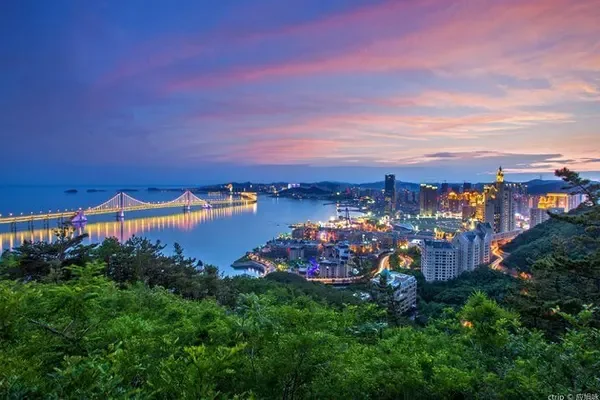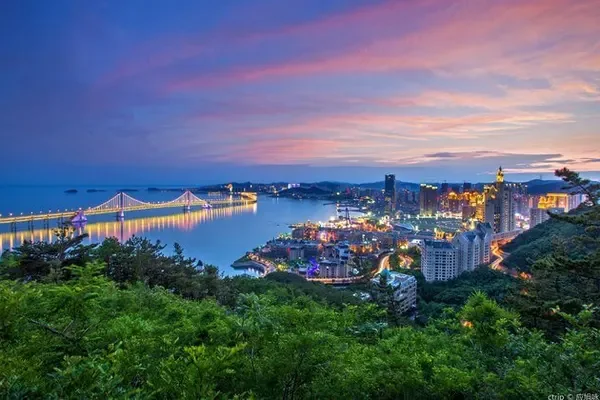China is so big, I want to visit it. Take you to a place you have been or have not been to.
Kucha, Lost Memories on the Silk Road
I have heard many stories about the tortoise (sound qiū, Qiu). When I read the books in my free time, when it comes to the Silk Road, the inclusion of the thirty-six countries in the Western Regions into the Chinese territory, the spread of Buddhism to the East, the art of grottoes, mural art, music and dance in the Western Regions, and even the integration of nationalities, etc., they all revolve around Do not open Kucha.
I came to Kucha in 2008. Kucha is already a modern industrial, agricultural and animal husbandry city, and of course it is also a national historical and cultural city.

Archaeological research shows that the early Kucha people, like the Loulan people, belonged to the ancient and primitive Indo-Europeans. The eyes are large and deep, the bridge of the nose is high and narrow, and the chin is pointed, which has distinct characteristics of the European race.
As early as the period from the Warring States Period to the Qin and Han Dynasties, around the Tarim Basin and the Tianshan Valley in Xinjiang, there were oases and lush pastures dotted with many ethnic groups. Most of them were engaged in agriculture, and some lived by animal husbandry, fishing and hunting. more than 30,
Zhang Qian recorded it as "Thirty-six Kingdoms in the Western Regions", and Kucha Kingdom is one of them. The structure of the Thirty-Six Countries is not static, and has been continuously divided and combined throughout history. During the Qin and Han dynasties, the Kucha Kingdom included counties such as Xinhe, Shaya, and Baicheng today, and expanded to counties and cities such as Aksu, Awati, Wushi, Aheqi, Keping, and Luntai in the Wei, Jin, Sui and Tang Dynasties. In the Qing Dynasty, Kucha was named Kuqa.

"Kuci" is called Kucina (Qu Zhi) in Sanskrit and Küs n (Qu Xian) in Uighur. The word "Kuci" first appeared in Ban Gu's "Han Shu". Long before Zhang Qian traveled to the Western Regions, there were contacts between the mainland and the Western Regions. However, the Kucha Kingdom, like other countries in the Western Regions, was controlled by the powerful Huns, and the Han-Hungarian War lasted for more than a hundred years. Huo Qubing conquered the Xiongnu in the west, and in the second year of Emperor Xuan of the Han Dynasty (60 years ago), he set up the Protectorate of the Western Regions in the current Luntai area to manage and manage the politics, economy, culture and military of the thirty-six countries in the Western Regions. When Ban Chao was the protector of the Western Regions, he moved to Kucha. Kucha has also successively experienced the former Qin, Qianliang, Houliang, Xiliang, Beiliang and other regimes established by different ethnic groups. During the Sui and Tang Dynasties, the Anxi Duhufu was established, and the manufacturing offices were all located in Qiucha, and the Kucha state has since disappeared. During the heyday of the Tang Dynasty, the jurisdiction of the Anxi Protectorate even reached Persia. Kucha Grand Bazaar, the meaning of bazaar

The Kucha royal family in the Han Dynasty began to imitate the Central Plains dynasty in setting up official positions and establishing a political system with strong Kucha characteristics. With the deepening of exchanges with the Central Plains dynasty, Qiuci gradually developed into the largest city-state in the Western Regions and the center of military affairs, economy and culture in the Western Regions.
Like the mainland, Kucha also builds commercial streets and pedestrian streets from time to time.


In the 23rd year of Qianlong in the Qing Dynasty (1758), Qiuci was included in the territory of the Qing Dynasty and named Kuqa. "Kuqa" is a Turkic transliteration of Kucha, which means "prosperous city-state" in Tocharian, and "crossroads", "long-term" and "long-term" in Uyghur. Now Kuqa County belongs to Aksu City, Xinjiang.
Kuqa Market

"Kuci is the only place in the world where ancient Indian, Greek-Roman, Persian, and Han and Tang civilizations meet." (Ji Xianlin) The east connects the west, the Silk Road is the hub, and the Silk Road is the hub. As the forefront of the intersection of Eastern and Western cultures, the channel connecting Asia and Europe, and the intersection of the world's four major civilization systems, the Western Regions writes the thickness and vicissitudes of the Silk Road civilization. The ancient country of Kucha, located at the crossroads of the Silk Road, is one of only two living fossils in China to study the culture of the ancient Western Regions, the other being Kashgar in Xinjiang.
Walking into a farmer in Kucha with a pair of foreigners




The course of nature and history did not show more mercy to ancient Qiuci. The city of Kuqa in front of us is no longer what it used to be, and it is difficult to see the figure of Qiucha. Today, we will not go nostalgic about the past and talk about the present, but go to Kuqa for a walk.
Kuqa on the bus

unity bridge

You can tell what it means at a glance. The bridge gate imitates the archway in the mainland and has the style of the Uighurs. The gateposts on both sides are in the style of Islamic minarets, and the second gate is engraved with "Guci Ancient Ferry". The bridge connects the old and new towns of Kuqa.


The old town is also clean and tidy


The Kuqa Nang is famous for its large size, which is called Kuqa Big Nang.

Kuqa Palace

The Kuqa Palace was restored and rebuilt in 2003 on the site of the 12th generation Prince's Mansion of the Manchu and Qing Dynasties. The full name is "Kuche's original hereditary Huibu prince's mansion".
In the 23rd year of Qianlong in the Qing Dynasty (1758), Mirzawud (known as Edu in Qing history) made great achievements in the battle between Zhungeer and Hezhuo. In the eighth year of Daoguang (1828) of the Qing Dynasty, Isaac, the grandson of E Dui, worked with the Qing army to quell the Zhang Geer rebellion, captured Zhang Geer, and was promoted to the county king because of his meritorious service. According to the salary standard that the county king should enjoy, the Qing court sent craftsmen from the Central Plains to build the palace.

The Wangfu is composed of two adjacent building groups, Wangfu and Xiaowangfu. The main building is arranged in four buildings in two rows. The hall adopts the Han architecture in the Central Plains, and the other buildings embody the architectural art style of the Uighur nationality.


In front of the hall, there is a pond with an area of about half an mu (locally called Laoba)


A unique pavilion built on a 7-meter-high platform. The gazebo is square, with beautiful arches, thin columns, carved railings and painted beams, which is a typical Uyghur architectural style.



Kuqa Temple is an Islamic church. Why did the former capital of Buddhism convert to Islam?


From the end of the Five Dynasties to the Southern Song Dynasty (approximately 940-1211), a Turkic-speaking nation in the Pamirs established the Khan Dynasty in present-day Xinjiang and Central Asia, which is called the Black Khan Dynasty in Chinese. The Black Khan Dynasty was strong, and the Kucha area gradually became subordinate to the Black Khan Dynasty. At that time, the Black Khan Dynasty had converted to Islam and launched a "shock war" against the countries in the Western Regions. After Kucha was attached, the Buddhist tradition that lasted for thousands of years in its territory was destroyed, and the Kucha people were assimilated into other ethnic groups in the Western Regions. , become a follower of Islam.
Kucha School is not yet a prominent school, and we are not researchers. We are just curious about the outside world, so come to Kuqa to have a look. There are also Buddhist cave art in Thousand Buddha Caves and the natural landscape of the Grand Canyon.
Please pay attention to more content, Lotto Leyou
Sohu account
fun headlines
NetEase
Baijiahao
Today's headlines
Daily Express
a bit of information
Know almost
Sina Weibo

